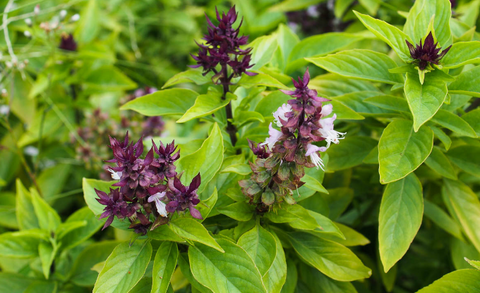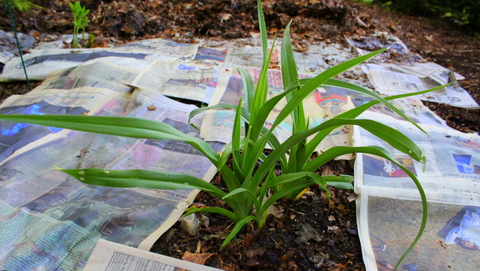Meet the Aphid: A Tiny Garden Menace
Aphids, those minuscule green, black, or white insects, are a common sight in gardens. Though small, these pests can wreak havoc on your plants, sucking the sap and leaving behind a trail of destruction. Often found clustering on the underside of leaves or tender shoots, aphids are notorious for their rapid reproduction and ability to infest entire plants seemingly overnight.

Why Controlling Aphids is Essential for Your Plants
Uncontrolled aphid populations can lead to stunted growth, deformed leaves, and reduced yields. They weaken plants by extracting vital nutrients and excreting honeydew, a sticky substance that fosters sooty mold growth. Effective aphid control is crucial not just for the health of individual plants, but for maintaining the overall balance and beauty of your garden.
Understanding Aphids
What Are Aphids? Getting to Know the Pest
Aphids are small, soft-bodied insects that feed by piercing plant tissues and sucking out the sap. They come in various colors, including green, black, yellow, and red. These pests are often wingless but can develop wings if the population becomes too large, allowing them to spread to new plants.
Life Cycle of Aphids: From Egg to Adult
Aphids have a fascinating yet troublesome life cycle. Most reproduce asexually, giving birth to live young. This allows their populations to explode rapidly. Winged forms can develop when conditions are crowded or food is scarce, enabling them to colonize new areas. In colder climates, aphids lay eggs that can overwinter and hatch in the spring.
Common Types of Aphids You Might Encounter
Different species of aphids prefer different plants. Green peach aphids, melon aphids, and cabbage aphids are among the most common. Each type has its preferred host plants but can also infest a wide range of species, making them a versatile pest to contend with.
Signs of Aphid Infestation
Spotting Aphids: What to Look For
To identify aphids, look for clusters of tiny, pear-shaped insects on the undersides of leaves or along stems. They may appear as tiny specks but a closer inspection will reveal their true nature. Aphids can be green, black, brown, red, or even pink.
How to Identify Aphid Damage on Plants
Aphid damage manifests as curled, yellowing, or deformed leaves. Stunted growth and a general decline in plant health are common signs. You may also notice a sticky residue on leaves or surrounding surfaces, a telltale sign of aphid honeydew.
Understanding Honeydew and Sooty Mold
Honeydew, the sugary waste product excreted by aphids, can lead to the growth of sooty mold, a black fungal growth that covers leaves and stems. While sooty mold itself doesn’t directly harm plants, it can block sunlight and reduce photosynthesis, compounding the damage done by the aphids.

Preventative Measures
Choosing Aphid-Resistant Plants
Some plants naturally repel aphids or are less susceptible to infestation. Planting aphid-resistant varieties can reduce the likelihood of an outbreak. Consider varieties that are known for their hardiness and resistance to pests.
Companion Planting: Nature’s Own Pest Control
Companion gardening entails growing specific plants together to avoid pests. Marigolds, garlic, and chives are known to repel aphids. Incorporating these plants into your yard will provide a natural barrier against pests.
Encouraging Beneficial Insects in Your Garden
Ladybugs, lacewings, and parasitic wasps are natural aphid predators. By attracting these allies to your garden, you can keep aphid populations in check. Planting nectar-rich flowers like dill, fennel, and yarrow can help draw these beneficial insects.
Natural Aphid Control Methods
The Power of Water: Using a Hose to Dislodge Aphids
A strong blast of water from your hose can knock aphids off plants, disrupting their feeding and reducing their numbers. This method is simple, chemical-free, and effective for light infestations. Be sure to spray the undersides of leaves where aphids like to hide.
DIY Insecticidal Soap: Recipes and Application Tips
Insecticidal soap can be made at home using a mixture of water, dish soap, and vegetable oil. This solution can be sprayed directly onto aphids to suffocate them. Apply it early in the morning or late in the evening to avoid harming beneficial insects and causing sunburn to your plants.
Neem Oil: A Natural Aphid Deterrent
Neem oil, derived from the neem tree, acts as both a repellent and an insect growth regulator. It disrupts aphid feeding and reproduction, gradually reducing their population. Spray neem oil on affected plants, focusing on the undersides of leaves.
Biological Control
Ladybugs: The Aphid’s Natural Predator
Ladybugs are voracious aphid eaters. You can purchase them from garden centers and release them in your garden. Once established, they can help keep aphid populations in check. Provide a diverse habitat to encourage them to stay.
Introducing Parasitic Wasps
Parasitic wasps lay their eggs inside aphids, and the developing larvae consume the aphids from within. These little insects offer no threat to humans but are an effective, natural solution to aphid control.
Attracting Lacewings to Your Garden
Lacewing larvae, often called "aphid lions," are aggressive aphid predators. Planting flowers such as cosmos, dill, and fennel can attract adult lacewings, encouraging them to lay eggs in your garden and help control aphid populations.

Cultural Practices
Proper Watering Techniques to Deter Aphids
Overwatering or underwatering can stress plants, making them more susceptible to aphid infestations. Maintain consistent watering practices to keep your plants healthy and resilient against pests.
Mulching and Its Role in Aphid Control
Mulching helps maintain soil moisture and temperature, reducing plant stress and deterring aphids. Organic mulches like straw or wood chips also promote beneficial soil organisms that can contribute to overall plant health.
Crop Rotation: Preventing Aphid Build-Up
Rotating crops can disrupt the life cycle of aphids and reduce their population. Avoid planting the same type of crop in the same spot year after year to prevent aphids from becoming established.
Chemical Control Methods
When to Consider Chemical Options
Chemical controls should be a last resort when natural methods fail or in the case of severe infestations. Always weigh the potential impact on beneficial insects and the environment before proceeding with chemical treatments.
Selecting the Right Insecticide for Aphids
Choose an insecticide specifically formulated for aphids. Products containing imidacloprid, permethrin, or pyrethrin can be effective. Always follow label instructions and safety precautions.
Safe Application Practices to Protect Your Plants
Apply insecticides early in the morning or late evening to minimize harm to beneficial insects. Avoid spraying during windy conditions and always wear protective clothing. Ensure complete covering, particularly on the undersides of the leaves.
Organic Pesticides
Using Pyrethrin-Based Sprays
Pyrethrin, derived from chrysanthemum flowers, is a natural insecticide effective against aphids. It acts by affecting the neurological systems of insects.
Benefits of Horticultural Oils
Horticultural oils, such as dormant oil or summer oil, smother aphids and their eggs. These oils are less harmful to beneficial insects and can be used throughout the growing season. Apply them during cooler parts of the day to avoid leaf burn.
Organic Sprays: Garlic, Pepper, and More
Garlic and pepper sprays can repel aphids with their strong odors. To make a garlic spray, blend garlic cloves with water and strain the mixture. For a pepper spray, mix hot pepper flakes with water. Apply these sprays regularly to deter aphids.

Homemade Remedies
Creating Garlic and Onion Sprays
Garlic and onion sprays can be potent deterrents for aphids. Crush garlic or onion and mix with water. Let the mixture sit overnight, then strain and spray it onto plants. This natural remedy can help keep aphids at bay.
Using Essential Oils to Repel Aphids
Essential oils like peppermint, clove, and rosemary can repel aphids. Mix a few drops of water and a small amount of dish soap to create a spray. Apply it to plants, focusing on areas where aphids are most active.
Baking Soda Solutions for Aphid Control
Baking soda can help control aphid infestations and prevent fungal growth. Mix a teaspoon of baking soda with water and a few drops of dish soap. Spray this solution on affected plants to reduce aphid populations.
Using Barriers and Traps
Yellow Sticky Traps: How They Work
Yellow sticky traps attract aphids with their bright color. Once aphids land on the traps, they get stuck. Place these traps around your garden to monitor and reduce aphid numbers effectively.
Row Covers: Protecting Your Plants Naturally
Row covers act as a physical barrier, preventing aphids from reaching your plants. They are especially useful for protecting young plants and can be easily removed for watering and maintenance.
DIY Aphid Traps: Simple and Effective Solutions
Create DIY aphid traps using yellow plastic cups coated with petroleum jelly. Place these cups around your garden to attract and capture aphids. This simple solution can help control aphid populations without chemicals.
Monitoring and Early Detection
Regular Plant Inspections: A Key to Early Detection
Regularly inspect your plants for early signs of aphid infestation. Early detection allows you to take action before the infestation becomes severe, making control easier and more effective.
Using Technology to Track Aphid Populations
Leverage technology such as smartphone apps and online resources to track aphid populations and receive alerts. These tools can help you stay informed and take timely action against aphids.
Keeping a Garden Journal for Pest Activity
Maintain a garden journal to record pest activity, treatments, and outcomes. This information can help you identify patterns and improve your aphid control strategies over time.

Dealing with Heavy Infestations
Emergency Measures for Severe Aphid Problems
In case of severe infestations, take immediate action to prevent further damage. Use stronger insecticidal soaps, horticultural oils, or chemical insecticides as a last resort to bring the population under control.
Pruning Heavily Infested Areas
Prune and dispose of heavily infested plant parts to reduce aphid numbers and prevent the spread of infestation. Be sure to sanitize pruning tools between cuts to avoid transferring aphids to healthy parts of the plant.
When to Remove and Destroy Affected Plants
In extreme cases, it may be necessary to remove and destroy severely infested plants to protect the rest of your garden. Dispose of these plants away from your garden to prevent aphids from returning.
Sustainability and Aphid Control
Eco-Friendly Practices for a Healthier Garden
Adopt eco-friendly practices such as organic gardening, composting, and water conservation to create a healthier garden environment. These practices not only benefit your plants but also support local wildlife.
Balancing Aphid Control with Environmental Impact
Strive to balance aphid control with minimal environmental impact. Choose natural and organic methods whenever possible and use chemicals as a last resort to protect beneficial insects and the ecosystem.
Reducing Chemical Dependence in Your Garden
Aim to reduce chemical dependence by focusing on preventative measures and natural control methods. Building a resilient garden ecosystem can help minimize the need for chemical interventions.
As you reflect on your journey to control aphids, appreciate the knowledge and skills you’ve gained. Every step, from prevention to intervention, contributes to a healthier and more vibrant garden.
Embrace future garden challenges with confidence and curiosity. Each obstacle is an opportunity to learn and grow as a gardener. With the right strategies and a resilient mindset, you can overcome any pest problem and enjoy a thriving garden.









